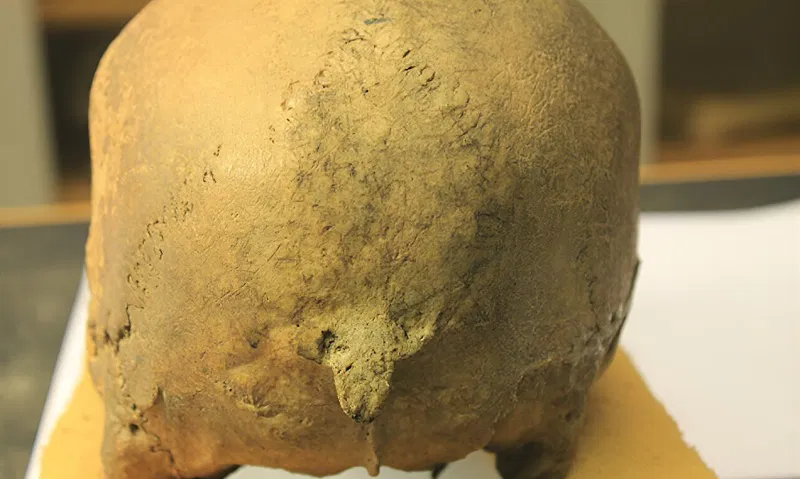For a long time, it was widely believed that Viking societies in Norway and Denmark were equally violent. However, new research has upended this assumption, revealing that Norway was far more violent than Denmark during the Viking Age.
A multidisciplinary team, including sociologist David Jacobson from the University of South Florida, has published a study in the Journal of Anthropological Archaeology that uncovers significant differences in the levels of interpersonal violence between the two regions. Interpersonal violence refers to violence between individuals not associated with official punishments.
The research, which analyzed skeletons and the presence of weapons in graves, found that Norwegian skeletons exhibited a higher incidence of traumatic injuries. Additionally, there was a significantly greater number of weapons, particularly swords, uncovered in Norway compared to Denmark.
Jacobson collaborated with experts from Norway and Germany, blending archaeology, sociology, and the study of ancient skeletons and runestones (stones with inscriptions) to explore how violence and social structures shaped Viking societies in these regions.
Norway: A Society Defined by Violence
The study found that approximately 33% of the skeletons from Viking Age Norway bore evidence of healed injuries, indicating that violent encounters were relatively common. Even more striking, 37% of these skeletons showed signs of lethal trauma, suggesting that many individuals in Norway died from violent confrontations, often involving weapons.
Weapons, especially swords, were integral to Norwegian Viking identity. The research uncovered over 3,000 swords from the Late Iron Age and Viking periods in Norway, a stark contrast to the mere few dozen found in Denmark. The presence of these weapons in graves points to their significant role in social status and identity in Norway, underscoring a culture deeply intertwined with violence.
Denmark: Controlled Violence and Strong Social Hierarchies
In contrast, Denmark exhibited a different pattern. Danish society was more centralized, with clearer social hierarchies and stronger authority. Violence was more controlled, often manifesting as official punishments such as executions. Skeletal evidence revealed that around 6% of Viking Danes died violently, with many of these deaths resulting from executions like decapitations.
Denmark's more organized society had fewer graves containing weapons compared to Norway. Rather than personal weaponry, social order in Denmark was maintained through political control, exemplified by the construction of large fortifications during King Harald Bluetooth's reign in the 10th century.
The study suggests that Denmark’s rigid social structure helped reduce overall violence by centralizing the use of force through official channels. Conversely, Norway’s more decentralized society experienced higher levels of peer-to-peer violence, as indicated by the greater incidence of trauma in the skeletal remains.
These findings challenge the notion of a homogenous Viking culture across Scandinavia. Instead, they reveal that Norway and Denmark had distinct social structures that influenced their levels of violence in different ways.
Jacobson hopes this research will deepen our understanding of how social structures influence violence, particularly in societies where written records are scarce or nonexistent.







